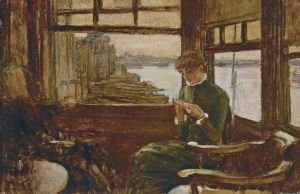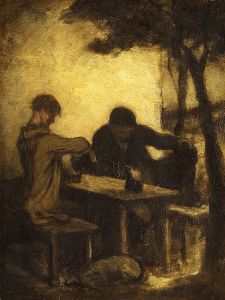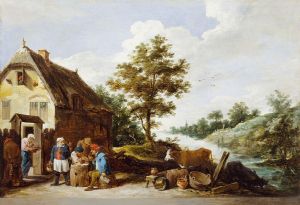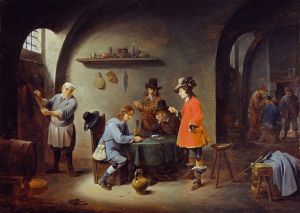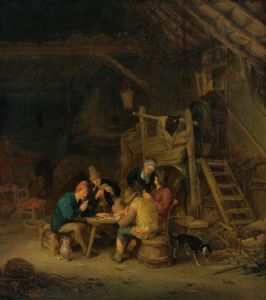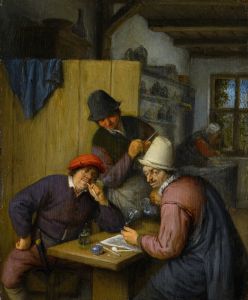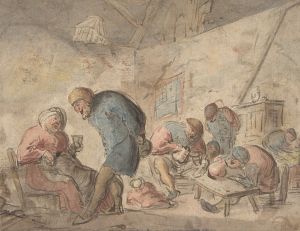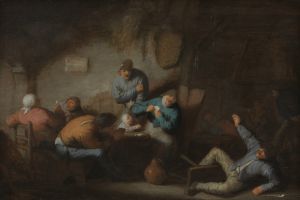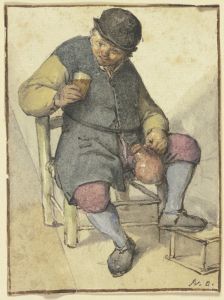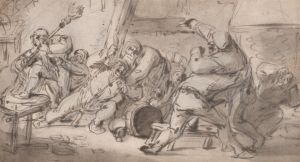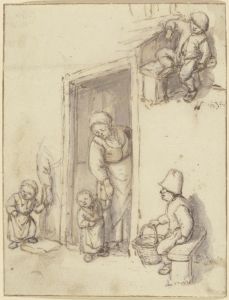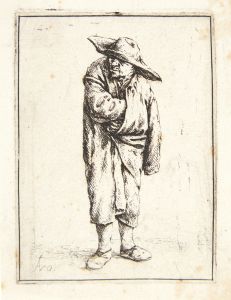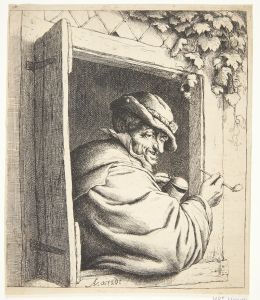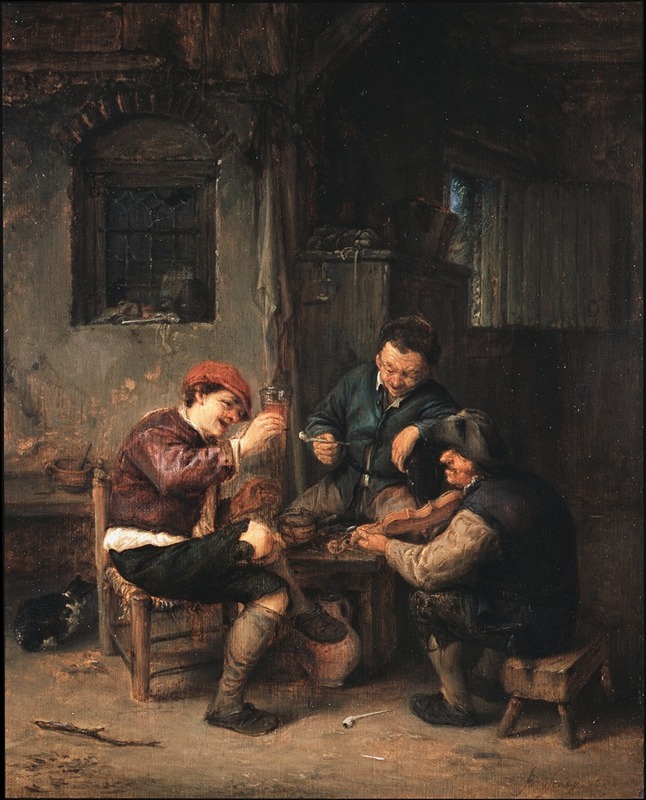
Three Peasants at an Inn
A hand-painted replica of Adriaen van Ostade’s masterpiece Three Peasants at an Inn, meticulously crafted by professional artists to capture the true essence of the original. Each piece is created with museum-quality canvas and rare mineral pigments, carefully painted by experienced artists with delicate brushstrokes and rich, layered colors to perfectly recreate the texture of the original artwork. Unlike machine-printed reproductions, this hand-painted version brings the painting to life, infused with the artist’s emotions and skill in every stroke. Whether for personal collection or home decoration, it instantly elevates the artistic atmosphere of any space.
"Three Peasants at an Inn" is a painting by the Dutch artist Adriaen van Ostade, created in the 17th century. Van Ostade was a prominent figure in the Dutch Golden Age of painting, known for his genre scenes depicting peasant life. Born in Haarlem in 1610, van Ostade was a student of Frans Hals, and his works often reflect the lively and detailed style of his mentor.
The painting "Three Peasants at an Inn" exemplifies van Ostade's focus on the everyday lives of common people. It portrays three peasants gathered in a rustic inn, engaged in conversation and leisure. The setting is typical of van Ostade's work, featuring a dimly lit interior with rough wooden furniture and a warm, earthy color palette. The atmosphere is intimate and convivial, capturing a moment of respite and camaraderie among the peasants.
Van Ostade's attention to detail is evident in the depiction of the characters' expressions and gestures. Each figure is rendered with a sense of individuality, contributing to the narrative quality of the scene. The artist's skillful use of light and shadow enhances the three-dimensionality of the figures and the space they occupy, creating a realistic and immersive environment.
The composition of "Three Peasants at an Inn" is carefully balanced, with the figures arranged in a triangular formation that draws the viewer's eye into the center of the scene. This arrangement not only adds to the visual harmony of the painting but also emphasizes the interaction between the characters. The use of chiaroscuro, a technique involving strong contrasts between light and dark, further accentuates the depth and texture of the scene.
Adriaen van Ostade's works, including "Three Peasants at an Inn," are celebrated for their ability to capture the essence of 17th-century Dutch peasant life. His paintings provide valuable insights into the social and cultural context of the time, reflecting the everyday experiences of ordinary people. Van Ostade's genre scenes were highly popular during his lifetime and continue to be appreciated for their historical significance and artistic merit.
"Three Peasants at an Inn" is part of a larger body of work by van Ostade that includes numerous similar scenes of peasant life. His oeuvre is characterized by a consistent focus on the themes of rural existence, often infused with a sense of humor and humanity. Van Ostade's ability to portray the simple pleasures and hardships of peasant life with empathy and realism has earned him a lasting place in the history of art.
Today, Adriaen van Ostade's paintings can be found in major museums and collections around the world, where they continue to be studied and admired by art historians and enthusiasts alike. "Three Peasants at an Inn" remains a testament to van Ostade's skill as a painter and his keen observation of the world around him.





